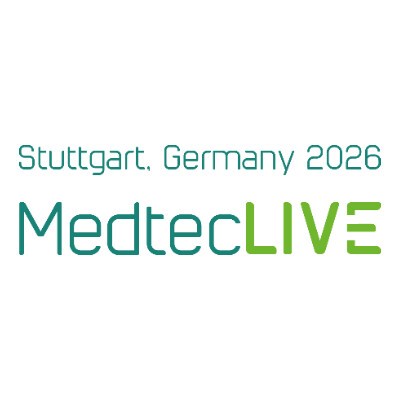With cobots and AI: laboratories defy the flood of samples
Laboratory diagnostics is the backbone of modern medicine. From blood tests to molecular biology - error-free and fast results are essential. As the volume of samples increases and skilled labour is scarce, traditional laboratory processes are reaching their limits. The industry is increasingly focu
The demands on medical laboratories are constantly increasing. Demographic change and growing health awareness are leading to an increased demand for diagnostics. Well over a billion laboratory tests are expected to be carried out in Germany every year. According to the Professional Association of Accredited Medical Laboratories in Germany (ALM e.V.) - which represents over 200 companies with more than 1,000 medical specialists, around 500 scientists and around 25,000 employees - two out of three diagnoses are based on or confirmed by laboratory medical tests.
Drivers of the automation trend
At the same time, many laboratories are struggling with limited human resources and rising costs. In addition, many of them are faced with budget cuts. A recent survey by laboratory equipment supplier Starlab in five European countries shows that cost-saving measures have already been implemented in many laboratories in the life science sector.
The pressure to automate therefore has many causes: ‘The key drivers are efficiency, throughput and costs,’ explains Andreas Traube, Head of the business unit Health Industries at the Fraunhofer Institute for Manufacturing Engineering and Automation (IPA). Traube has been researching this topic for over 20 years, advising industry on the development of laboratory equipment and laboratories on its implementation. ‘In Germany, several million laboratory samples are analysed every day - manual processes would simply not be feasible here and would also be far too expensive. At the same time, automation improves process quality. While human actions vary, machines always carry out the same processes in exactly the same way. This increases the reliability of diagnoses,’ says the expert.

Andreas Traube, Head of the business unit Health Industries at the Fraunhofer Institute for Manufacturing Engineering and Automation (IPA) © Fraunhofer IPA
It all started with the AutoAnalyzer
The trend towards automation in laboratory diagnostics has a long history dating back to the middle of the 20th century. The first mechanised devices for blood and urine analysis made the work of laboratories easier. A milestone was the development of the AutoAnalyser in the 1950s, which made continuous blood analysis possible for the first time. It became apparent that standardised, machine-controlled processes were not only faster, but also largely error-free.
In the 1970s, the first fully automated systems came onto the market, particularly for haematology and clinical chemistry. These developments paved the way for computer-controlled analysers, which became established in the 1980s and enabled large-scale automation in laboratories for the first time. The networking of analysers with laboratory information management systems (LIMS) then made a further major leap forward in the 1990s, rendering many manual interventions superfluous.
Digitisation in the 2000s took automation to a new level. High-throughput sequencing devices, automated PCR analysis systems and robotic sample handling revolutionised molecular diagnostics. Today, modules and systems from manufacturers such as Roche, Sartorius or Siemens Healthineers and robots from ABB or Festo, for example, are indispensable in daily use.
Networking as a topic of the future
And yet there is still considerable potential for automation. In the near future, solutions will have to be found for the problem that many laboratory machines are not fully networked. Andreas Traube: ‘We often have stand-alone machines - devices that take over individual work steps, while linking, logistics and information processing are still done manually.’
There is a particular need for action in the IT infrastructure of laboratories, says Jan Kirchhoff, co-founder and co-managing director of the Karlsruhe-based start-up Medicalvalues: ‘Laboratories are actually the pioneers in the digitalisation of the healthcare sector. Automation is already very advanced, especially in routine examinations. Where it gets exciting is the integration of specialised diagnostic areas such as pathology or genetics into the digital systems. The next step is to network the data flows and diagnostic processes more holistically in order to enable even better and faster decisions,’ he believes.

Jan Kirchhoff, co-founder and co-managing director of Medicalvalues © Medicalvalues
Support in the interpretation of data
Medicalvalues develops and distributes software that helps doctors and laboratory physicians to make complex diagnoses faster and more accurately. The company, which was founded in 2021, also relies on AI. ‘However, our solution is not a pure machine learning system, but a ‘reasoning system’,’ explains Kirchhoff. ‘It combines various machine learning methods with validated medical rules and scores. We also use current scientific guidelines and specialist literature to integrate existing medical knowledge into our system. Development is carried out in close collaboration with external doctors and laboratories, who also support us in verifying our models.’
Medicalvalues started with the basic idea that laboratories have become very efficient and generate large amounts of high-quality data, but that it is often a challenge for the laboratories, but also for the doctors sending in the data, to derive the right conclusions from the information. Jan Kirchhoff: ‘With our system, we support every step of the process, from the decision as to which laboratory parameters are the right ones, to the diagnosis by laboratory doctors and the conclusions to be drawn from the data: How should a long chain of figures be interpreted, which further tests are necessary, which tests are not? Our experience with complex IT infrastructures helps us to implement interoperability efficiently. The important thing is: we always provide support, but we don't replace the doctor at this point.’
Medicalvalues now cooperates with laboratories of all sizes - from chains such as Amedes to specialised facilities such as the Werlhof Institute for Coagulation Medicine. Clinics are also among the customers, including university clinics and hospitals such as the Dietrich Bonhoeffer Clinic in Neubrandenburg.
Obstacles to automation
One difficulty in the automation of laboratories are established structures and deficits in the standardisation of device interfaces and consumables: many laboratories use analysis devices from different manufacturers that do not communicate seamlessly with each other, although this is now technically possible. Andreas Traube: ‘Of course, manufacturers can benefit from not using certain standards at all or only using their own standards. I therefore advise users who want to invest in the automation of their laboratory to pay attention to this factor.’
Another obstacle: non-standardised sample tubes are often used, which is unfavourable for the use of robots, says Andreas Traube. ‘While in industrial automation you adapt products to machines, in laboratory automation the machine has to adapt to the existing materials - and that is an enormous technical challenge. One example of this is the variety of tubes, which not only vary in size and shape, but also have different caps, labelling and material properties - factors that automated systems first have to recognise and process,’ laments the Fraunhofer expert.
Cobots and AI open up new possibilities
Andreas Traube emphasises that robotics can not only perform repetitive tasks, but also increasingly carry out intelligent functions: ‘A robot in the lab doesn't just have to perform a single task, it has to be proficient in various activities. We are also focussing on mobile robotics that can transport samples flexibly.’

Smart robots for more flexibility in everyday laboratory work © ABB
Fraunhofer IPA supports manufacturers in developing new robotic solutions for laboratory use. The institute's expertise is not only used by those mechanical engineers who already have a foothold in medical technology: ‘Many traditional automation companies come from other industrial sectors and want to enter the medical technology market. We support them with test environments and feasibility studies and help them to adapt their technologies to the special requirements of the laboratory environment,’ reports Traube. Collaborative robots, cobots, which interact directly with humans and thus open up completely new possibilities for automation, are currently in particularly high demand.
Jan Kirchhoff is also convinced that additional robotics makes sense, but does not expect it to solve all the challenges of automation. ‘I see three major developments in the next few years: Firstly, AI will not only support diagnostics, but will also play a role in the software development process by recognising errors more quickly and enabling automated quality assurance. Secondly, interoperability will improve - hopefully through regulatory requirements that promote open standards. Thirdly, patients will have more access to their data through the electronic patient file, which in turn can drive precision medicine and prevention. It is crucial that we manage to include all sections of the population in this progress.’
Close collaboration between stakeholders required
Andreas Traube is counting on further significant advances in robotics through AI: ‘Robotics is becoming more intelligent, more autonomous and more versatile. Technically, it is already possible for robots to take over many of the manual tasks in the laboratory. This is not yet economical in every respect, but we are moving in this direction. One particularly exciting topic is the development of robots that independently recognise which task is next instead of just executing predefined commands - real progress towards adaptive, intelligent systems.’
Automation is fundamentally changing laboratory diagnostics. It increases efficiency, reduces errors and relieves the workload of specialists, who can increasingly concentrate on complex tasks. Despite existing challenges such as the interoperability of systems, the development is on a clear path: towards intelligent, networked laboratories that enable faster and more precise diagnostics. The combination of robotics, AI and data-driven processes will determine the future of the industry. At the same time, increasing automation requires close collaboration between laboratories, technology providers and the scientific community in order to further develop
diagnostics and adapt to new challenges.
MedtecLIVE Healthtech Pavilion: Symbiosis of medical technology and automation
The MedtecLIVE Healthtech Pavilion provides a platform for companies to present their latest developments in the field of automation to an interested specialist audience. The format is part of the comprehensive brand family, which supports the industry with its diverse range of products and services and its strong network in driving technological development forward. This has resulted in several events with different focal points at Stuttgart, Nuremberg and Munich, where industry players can meet their target group in a customised way.
‘When technologies are developing as rapidly as they are at present, formats are needed that accompany precisely this change, make it tangible and promote dialogue. Our new MedtecLIVE Healthtech Pavilion from 24 to 27 June at the leading trade fair duo automatica/Laser World in Munich creates the ideal link between the topics of medical technology, automation and robotics as well as lasers and photonics. It is an opportunity to showcase innovations, products and services, gain valuable impetus and initiate collaborations,’ says Silke Ludwig, Deputy Director MedtecLIVE.

Silke Ludwig, Deputy Director MedtecLIVE © NürnbergMesse
The cooperation is complemented by the two-day ‘MedtecSUMMIT meets automatica’ organised by Bayern Innovativ on 25 and 26 June. Attendees can expect exciting insights into current pain points in laboratory automation, innovative best practices for sample processing, data analysis and IT infrastructure as well as an outlook on current trends. ‘The automation of laboratory diagnostics is a decisive step towards efficiency and precision in modern medicine. Together, we are shaping the future of healthcare - quickly, safely and reliably,’ says Julia Ott, Head of Partner Network Health and Medical Technology Cluster Manager at Bayern Innovativ GmbH.


